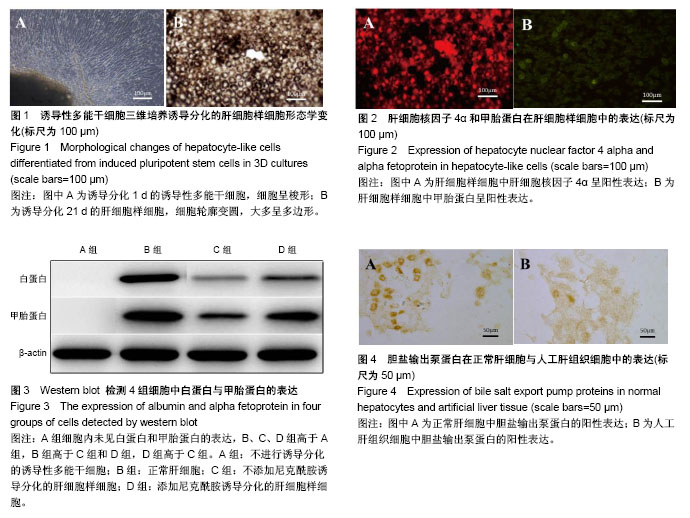| [1] 赵紫烟,安雪青,史丽,等. 血清前白蛋白/总胆红素比值对肝衰竭患者预后的预测价值[J]. 中国现代医学杂志, 2017,27(21): 75-78.[2] Hayashi H, Takamura H, Gabata R, et al. Induction of Artificial Pancreas in Liver Transplant Recipients: Preliminary Experience with an Insightful Message.Ann Transplant. 2017; 22:590-597.[3] 丁义涛. 生物人工肝和肝移植: 肝衰竭治疗新模式[J]. 临床肝胆病杂志,2017,33(9):1693-1698.[4] 高义萌,孙露露,惠利健. 生物人工肝研究进展[J].生命科学, 2016,28(8):915-920.[5] Struecker B, Raschzok N, Sauer IM.Liver support strategies: cutting-edge technologies.Nat Rev GastroenterolHepatol. 2014;11(3):166-176.[6] Wu DB, Chen EQ, Bai L, et al. Propylthiouracil-induced liver failure and artificial liver support systems: a case report and review of the literature.TherClin Risk Manag. 2017;13:65-68.[7] Bhagavatula SK, Chick JF, Chauhan NR, et al. Artificial ascites and pneumoperitoneum to facilitate thermal ablation of liver tumors: a pictorial essay.AbdomRadiol (NY). 2017; 42(2):620-630.[8] 顾劲扬,施晓雷,任昊帧,等. 体外生物人工肝支持系统治疗肝功能衰竭的系统评价[J]. 中国组织工程研究,2013,17(18): 3374-3380.[9] Hoshiba T, Otaki T, Nemoto E, et al. Blood-Compatible Polymer for Hepatocyte Culture with High Hepatocyte-Specific Functions toward Bioartificial Liver Development.ACS Appl Mater Interfaces. 2015;7(32): 18096-18103.[10] 郭恩玲,孔静,刘彬彬,等. 生物型人工肝模型的建立及其在实验中的应用[J]. 中国普外基础与临床杂志,2015,22(9):1137-1142.[11] 丛庆伟,朱英. 人工肝支持系统治疗肝衰竭的研究进展[J].医学与哲学,2014,35(8B):70-73.[12] Gu J, Shi X, Zhang Y, et al. Heterotypic interactions in the preservation of morphology and functionality of porcine hepatocytes by bone marrow mesenchymal stem cells in vitro.J Cell Physiol. 2009;219(1):100-108.[13] Mazzoccoli G, Longhitano C, Vinciguerra M.Cardio-hepatic metabolic derangements and valproic acid. CurrClinPharmacol. 2014;9(2):165-170.[14] Luo Y, Lou C, Zhang S, et al. Three-dimensional hydrogel culture conditions promote the differentiation of human induced pluripotent stem cells into hepatocytes.Cytotherapy. 2018;20(1):95-107.[15] 卫金花,曲强,杨阳,等. 体外三维培养骨髓间充质干细胞诱导分化为肝细胞及其极化特征[J]. 基础医学与临床, 2012,32(6): 639-643.[16] Hoekstra R, van Wenum M, Chamuleau RA.Pivotal preclinical trial of the spheroid reservoir bioartificial liver.J Hepatol. 2015; 63(4):1051-1052.[17] 肖晋,王立军,刘妙娥. 免疫透射比浊法与溴甲酚绿法检测血清白蛋白的结果对比分析[J]. 吉林医学,2013,34(15):2893-2894.[18] 骆连妹,蔡萍金,黄胜起. 两种试剂测定血清尿素氮的方法对比及偏差评估[J].中国热带医学,2005,5(8):1703-1704.[19] 李碧蓉,唐海林,曹妍群,等. 利拉鲁肽对1-甲基-4-苯基吡啶离子诱导的PC12细胞氧化损伤的影响[J].中国新药杂志,2016,25 (17):1994-1999.[20] 李华,文峰,漆仲春,等. 人脐带间充质干细胞与肝细胞共培养可分化为肝样细胞[J]. 中国组织工程研究, 2013,17(32): 5772-5777.[21] Glorioso JM, Mao SA, Rodysill B, et al. Pivotal preclinical trial of the spheroid reservoir bioartificial liver.J Hepatol. 2015; 63(2):388-398.[22] Takahashi K, Yamanaka S.Induction of pluripotent stem cells from mouse embryonic and adult fibroblast cultures by defined factors.Cell. 2006;126(4):663-676. [23] 袁淑芳,胡兰英,姜涛,等. 骨髓间充质干细胞移植肝衰竭大鼠CD163和白细胞介素10的表达[J]. 中国组织工程研究, 2014, 18(6):919-925.[24] Radwan RR, Mohamed HA.Nigella sativa oil modulates the therapeutic efficacy of mesenchymal stem cells against liver injury in irradiated rats.J PhotochemPhotobiol B. 2018; 178: 447-456.[25] 侯相瑜,金晶,李宏亮,等. SIRT1 在丙戊酸对肝细胞毒性中的作用研究[J]. 中国药理学通报,2015,31(1):31-34.[26] 杨晓蕾,陈智聪,廖继东,等. 尼克酰胺对人脐带间充质干细胞的保护效应[J]. 中国病理生理杂志, 2015,31(10):1756-1761.[27] 何文艳,刘静,刘树贤. 肝纤维化大鼠骨髓间充质干细胞体外诱导为类肝细胞[J]. 基础医学与临床,2009,29(3):277-282.[28] Cusick RA, Lee H, Sano K, et al. The effect of donor and recipient age on engraftment of tissue-engineered liver. J Pediatr Surg. 1997;32(2):357-360.[29] Soto-Gutierrez A, Navarro-Alvarez N, Rivas-Carrillo JD, et al. Construction and transplantation of an engineered hepatic tissue using a polyaminourethane-coated nonwoven polytetrafluoroethylene fabric. Transplantation. 2007;83(2): 129-137.[30] 俞建雄,袁静,许瑞云. 三种大鼠骨髓间充质干细胞源性人工肝组织的构建与评价[J]. 中国组织工程研究, 2014,18(41): 6578-6584. |



